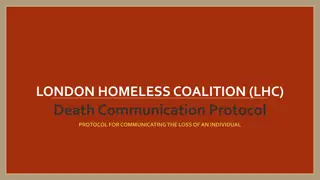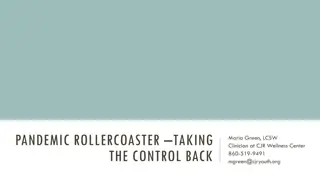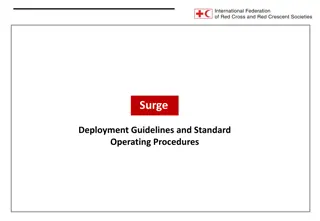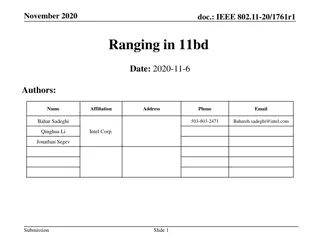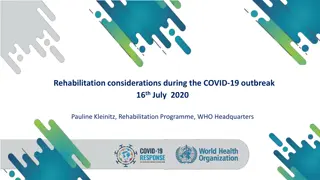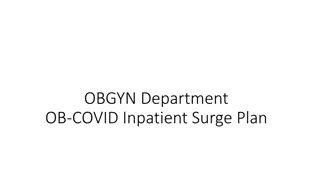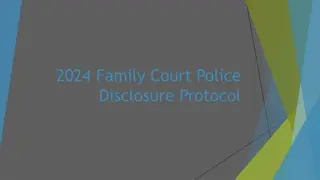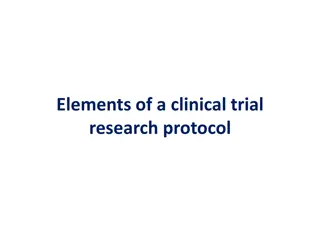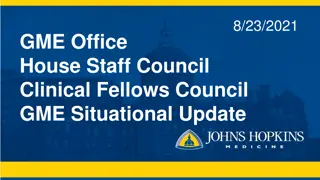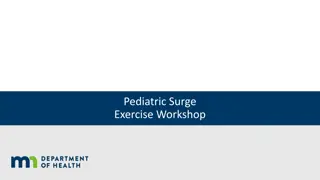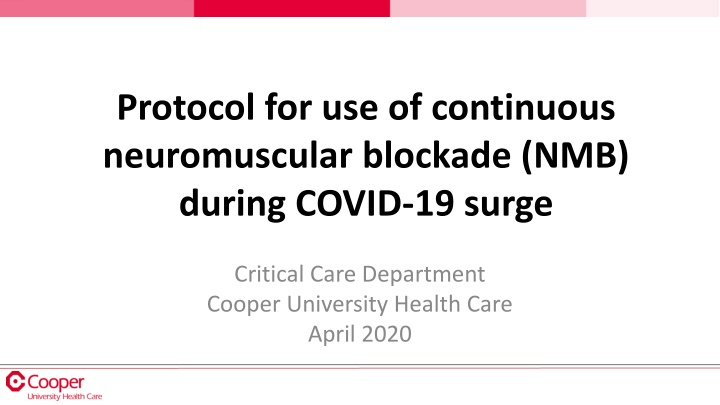
Management Protocol for Neuromuscular Blockade in COVID-19 ARDS Patients
This protocol outlines the use of continuous neuromuscular blockade in COVID-19 patients with severe ARDS to manage oxygenation and ventilator dyssynchrony. It includes indications, contraindications, sedation titration guidelines, and recommendations for assessing the need for continued NMB daily. This resource is valuable for critical care departments dealing with the challenges of the COVID-19 surge.
Download Presentation

Please find below an Image/Link to download the presentation.
The content on the website is provided AS IS for your information and personal use only. It may not be sold, licensed, or shared on other websites without obtaining consent from the author. If you encounter any issues during the download, it is possible that the publisher has removed the file from their server.
You are allowed to download the files provided on this website for personal or commercial use, subject to the condition that they are used lawfully. All files are the property of their respective owners.
The content on the website is provided AS IS for your information and personal use only. It may not be sold, licensed, or shared on other websites without obtaining consent from the author.
E N D
Presentation Transcript
Protocol for use of continuous neuromuscular blockade (NMB) during COVID-19 surge Critical Care Department Cooper University Health Care April 2020
Background Patients with COVID-19 may progress to ARDS, requiring use of NMB to manage oxygenation and ventilator dyssynchrony During COVID-19 surge, bispectral index (BIS) monitor may not be available to monitor level of sedation for all patients who require NMB therapy
Indications for NMB Severe ARDS with ongoing hypoxia due to ventilator dyssynchrony Severe status asthmaticus with ventilator dyssynchrony Shivering preventing achievement of targeted temperature management Surgical request (e.g. open abdomen, returning to OR)
Contraindications for NMB Any condition requiring accurate neurologic monitoring, neurological status is the primary concern, and neurological changes would prompt emergent intervention Inability to achieve or contraindication to deep sedation Brain-death testing (absolute) End-of-life care, comfort care, or compassionate extubation (absolute) Cardiogenic hemodynamic instability (relative) High dose steroids (relative)
Protocol 1. Titrate sedation, using established protocols and multimodal analgosedation, to achieve a RASS of -5. Aim to use the minimum amount of medications to achieve a RASS of -5 and NVPS <3. 2. Once the minimal rates of continuous infusions of analgosedation are established to achieve RASS of -5/ NVPS <3, change the orders in EPIC to non-titratable. This includes eliminating the titration parameters in the administration instructions and the dose range within the EPIC orders. 3. Initiate neuromuscular blockade agent (NMBA) per protocol. 4. Titrate NMBA to desired peripheral nerve stimulation via train of four (TOF), as well as elimination of overbreathing the respiratory rate set on the ventilator. o When used for shivering, NMBAs should titrate to BSAS of 0
Protocol, continued 5. Treating physicians should reassess need for continued NMB daily during interdisciplinary rounds. If there is no clear contraindication, a paralytic vacation should be trialed to assess the following: o The need for the continuous infusion the NMBA o To allow titration of analgosedation to goal RASS -5/ NVPS <3, as patient needs may have changed due to tachyphylaxis o Perform a neurologic examination
Protocol, continued 6. If the patient triggers the ventilator, titrate analgosedation to attempt achievement of ventilator synchrony through deep sedation without NMB. o If unable to achieve synchrony, or decompensation occurs, notify the treating physician. Analgosedation should be titrated to RASS -5/ NVPS <3 prior to reinitiation of NMB (starting with bolus) per orderset. o Analgosedation orders should be updated to be non-titratable. For ANY adjustments to analgosedation the patient must be able to be assessed using RASS/NVPS and thus not be paralyzed. o Exception: bolus analgesics and/or sedatives should be used for expected painful and/or stimulating procedures (central lines, wound dressing changes, proning/ supinating etc)
Clinical Checklist Items Reassess daily for need for continued NMB (and document in note) VTE chemical and mechanical prophylaxis Passive range of motion exercises BID PT consult Serum glucose <180 mg/dL NO sedation vacations or SBT while paralyzed (absolute contraindication) Lubricating eye drops at least twice daily
Patient Care Recommendations DO continue to talk to patients as if they were responsive, explain any and all procedures that are going to be done DO use local anesthetic for painful procedures (central lines, LP, chest tubes, para/thoracentesis, etc) o DO consider bolus dose analgesia/ sedation before procedures. Use continuous infusions of sedative(s) capable of achieving deep sedation such as propofol or midazolam o Dexmedetomidine does NOT have a role in achieving deep sedation Avoid prolonged infusions of NMBAs (>48 hours) if possible Avoid concomitant steroids o Steroids increase the risk of critical illness myopathy, neuropathy and VAP
Key Learning Points If BIS is available, use standard protocol, however BIS should be prioritized on patients on ECMO. Without BIS, do NOT attempt to titrate sedation while on NMBA. Change orders in EPIC to reflect that sedation/ analgesia drips are non-titratable. Boluses are still ok. Do daily checks off NMBA (if safe to do so) to see if NMB is still needed and to see if sedation/ analgesia needs to be titrated up or down. 9





